America on Canvas: 15 Renowned Paintings that Defined a Nation
- Top 15 Must-See American Paintings
- Paul Revere by John Singleton Copley (1770)
- The Veteran in a New Field by Winslow HOMER (1865)
- John Singer Sargent, Portrait Of Madame X (1884)
- The Grass Fire by Frederic Remington (1908)
- Stag in Sharkey's by George Bellows (1909)
- Black Iris by Georgia O'Keeffe (1926)
- Grant Wood, American Gothic (1930)
- Edward Hopper, Nighthawks (1942)
- Freedom from Want by Norman Rockwell (1943)
- Christina's World by Andrew Wyeth (1948)
- Number 5 by Jackson Pollock (1948)
- Helen Frankenthaler, Mountains and Sea (1952)
- Campbell Soup Cans by Andy Warhol (1962)
- WHAAM! by Roy Lichtenstein (1963)
- Jean-Michel Basquiat, Untitled (1982)
- FAQs
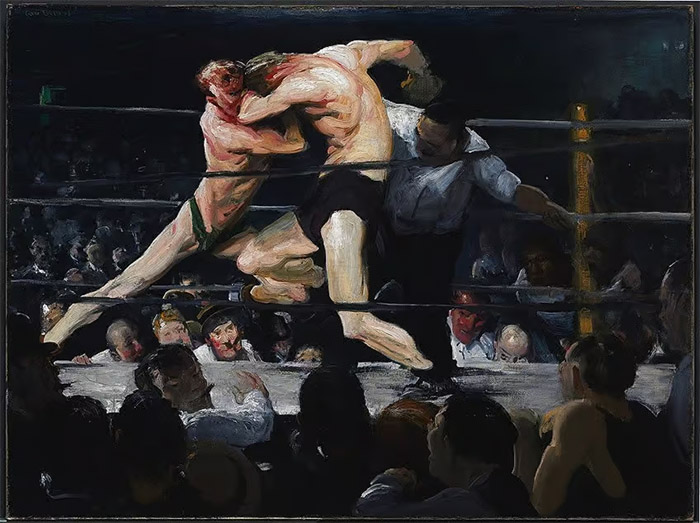
American art catches attention and stands out. Why? That’s because it tells a story of adventure and discovery. More importantly, it has a pioneering spirit and a unique flavor. These artworks managed to capture the heart of a nation that's always evolving. In these pictures, you can see scenes that depict freedom, individuality, unity, or pride.
In fact, many famous American artists have added colors to the canvas of American culture. They illustrated everything from sentiments of exclusion to feelings of acceptance. Today, we'll delve into some of the most iconic artworks by genuine American virtuosos.
Top 15 Must-See American Paintings
Every eminent American creator has a distinct narrative. Their lineages trace back to diverse corners of the globe, each introducing its own essence. However, a novel cultural tapestry emerged in America - a fusion of international customs complemented by quintessential American undertones.
These artists did more than just craft visuals. They encapsulated history, adversities, and the zeitgeist of their times.
Let's dive into some of the best pieces of American art and see the nation through the eyes of its finest artists.
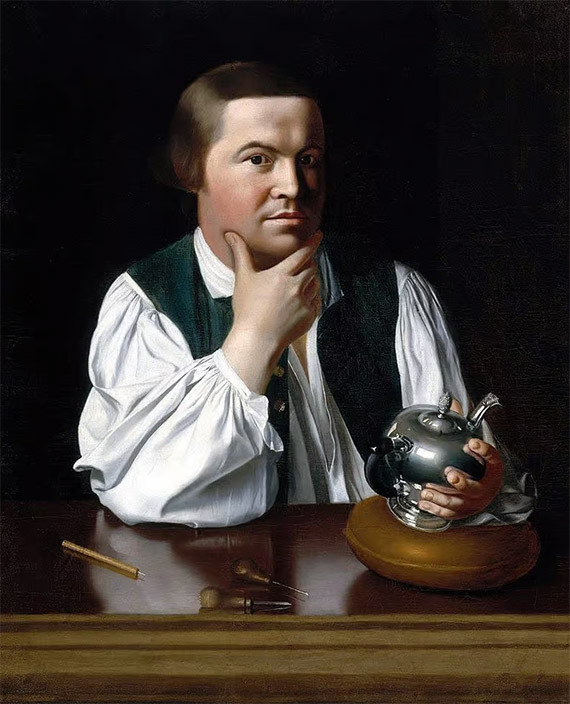
Paul Revere by John Singleton Copley (1770)
Paul Revere is John Singleton Copley’s only finished portrait of a craftsman dressed in shirtsleeves, depicted working. Revere appears half-length and is seated behind a tabletop that has been meticulously cleaned. He's dressed down. He looks up to the viewer as if he had just glanced away from the teapot in his hands. The teapot has been completed but is unadorned.
Copley was an expert silversmith and a rococo artist specializing in etchings and pots.
His portrait of Revere was unique, not only in his career but in American colonial painting. Copley was a priest, businessman, and their wives. He had painted some images of artisans, but his typical clients were clergymen, businessmen, or their spouses. In one of his earliest pictures, Peter Pelham, from around 1754, showed an artisan using the tools of their profession.
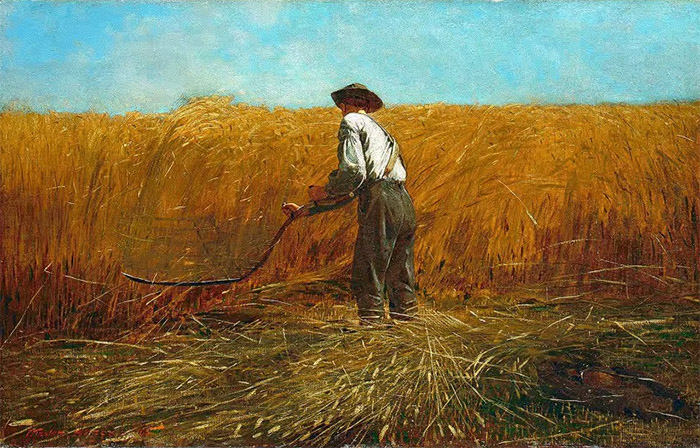
The Veteran in a New Field by Winslow HOMER (1865)
Few conflicts in American history have left such a lasting impression on society as the Civil War. This popular American painting quickly became famous for portraying post-war life in a beautiful, modest wheat field. Homer shows a tired soldier focusing on farming in 1865 after Lee's defeat. Although the nation is still deeply divided, it has unquestionably moved on from its most difficult period.
The man is seen working in the fields during the midday sun. The worker's jacket, lying with the flask issued by the military in front, shows the nation no longer wants to fight. The farmer's sickle is a reminder of when the region suffered from many fatalities.
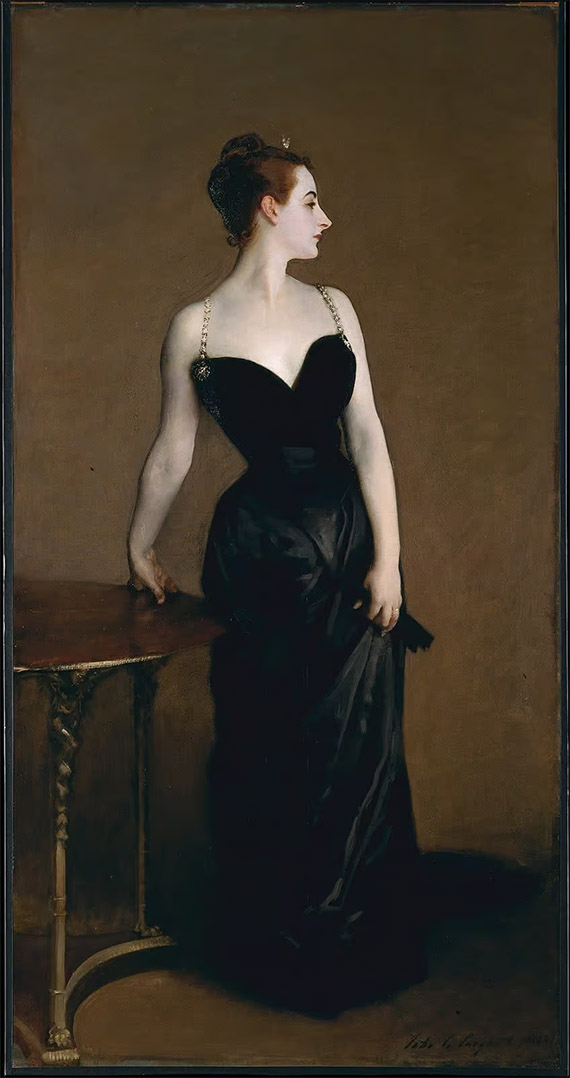
John Singer Sargent, Portrait Of Madame X (1884)
It is difficult to comprehend why John Singer Sargent’s artwork, Madame X, horrified and shocked Paris. You'll see a woman with a chignon standing in front of a brownish background. She wears a black John Singer Sargentskirt with golden straps, and one hand is holding a fan. The other rests on a round table.
The curve of her nose draws the viewer's attention slantwise from the picture.
The picture today appears to be a lady dressed in a well-made, elegant gown with a flawless skin tone and aristocratic features.
This image contradicts Virginie Avegno Gautreau's portrait and the controversy surrounding its Paris Salon presentation. The outpouring was so intense that the painter had to leave the country, and the image of his high-society model was forever tainted.

The Grass Fire by Frederic Remington (1908)
Frederic Remington's 1908 oil painting depicts a group of Native Americans on the prairie using a method of unconventional warfare against an unknown opponent.
They do this by lighting grasses. According to contemporary reports, Native American fighters used this method at a place where they thought their enemy would be downwind. This allowed the fog generated by the controlled burns to drift towards their unseen opponent, obstructing vision and creating chaos in their ranks.
Remington’s lighting ability shines here. The Native American fighters appear even more frightening when lit from below.
The black field adds to the seriousness of the scene and allows the viewer to wonder what could be lurking there. Additional soldiers are visible in the distance. This is a very interesting way to tell a story, as it shows the events from one perspective and allows the viewer to make their own interpretations based on cultural differences.

Stag in Sharkey's by George Bellows (1909)
Bellows was not surprised to find Sharkey's Athletic Club - a rowdy, noisy bar near his studio with a boxing ring behind the bar. Tom "Sailor", a former fighter and US Navy employee, founded the club, which attracted men to watch or participate in fights. Open fighting was prohibited in New York during this time. A private event was required to hold a fight.
Usually, attendance was restricted to members of an organization. However, when a foreigner attended, he received provisional admission and was referred to as a stag.
Bellows created an eerie picture using rapid sweeps to mimic the action of two boxers. He chose a low angle to put the spectator right in the middle of the crowd watching the fight. He chooses to "evoke participation" in the battle. He explained, "I'm not familiar with fighting. I'm just depicting two men who are trying to kill each other."
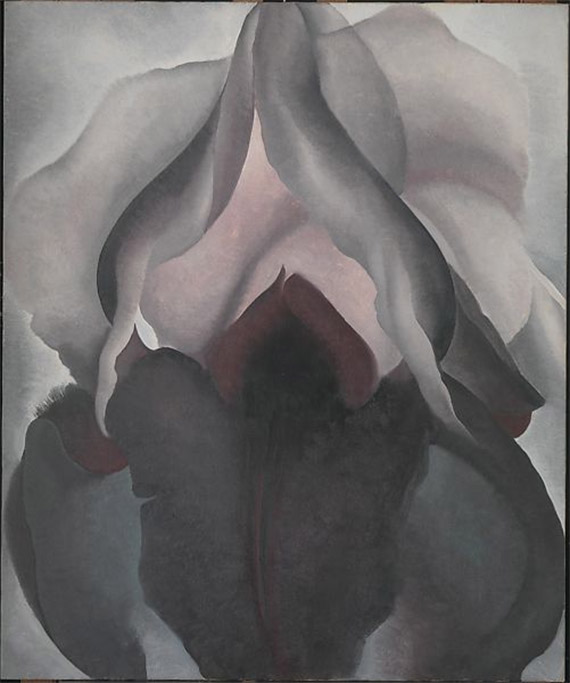
Black Iris by Georgia O'Keeffe (1926)
Georgia O'Keeffe's catholic and devout upbringing may have made her aware of this visual metaphor. Her irises have been a source of inspiration for many years. She preferred the black iris, available only at certain florists in New York during spring.
In contrast to the Impressionist flower paintings such as Vincent van Gogh’s "Irises", the enlargements or abstracts of her blooms are often described in reproduction terms. They can be almost scientifically accurate.
These explanations, which were previously the province of Freudian analysts, have been reproduced by feminist interpretations. They claim that the Black Iris is an anatomical comparison of female anatomy.

Grant Wood, American Gothic (1930)
Grant Wood is one of America's greatest painters. This painting is considered to be one of his best. The image depicts a middle-aged couple (usually regarded as a father and daughter) standing in front of their home, a timber-built house built in the American style of architecture that was popular in the 1890s.
Because the people are so close to the observer, it is difficult to see their surroundings.
He modeled his home after Dibble House in Eldon, Iowa. Nan, his sister, and Dr. Byron McKeeby were dressed as the subjects. Many art critics viewed the piece as a sarcastic commentary on small-town life due to its resemblance to the traditional image of Midwest country residents with their dungarees, pitchforks, and all.

Edward Hopper, Nighthawks (1942)
The iconic painting Nighthawks, by Edward Hopper, captures the life of Americans in the 1940s. This oil painting shows a scene in a diner at night, with a few people still hanging out.
His work is a combination of light, shadow, and color on many levels.
The vivid colors contrast with the intense light. Although this may seem excessive in the picture's context, the shadows define the image in many different ways. The couple in the photo appears to be in a long period of stillness while the server in the restaurant looks up briefly as he does his job. A second person is seated in a similar calmness, with his back to the observer.
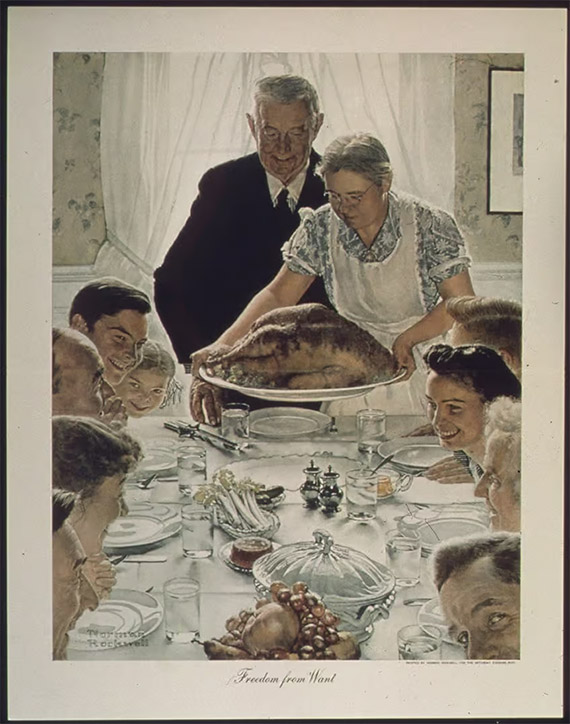
Freedom from Want by Norman Rockwell (1943)
Norman Rockwell was inspired to paint this picture by President F. D. Roosevelt’s State of the Union Address. The same message inspired three more paintings by Rockwell. At the time of the painting, the USA was still in World War II. The artwork was intended to show that, despite all the hardships, the country's conservative values remained essential.
Three generations are seated around a Thanksgiving meal. The husband sits at the head of the table while his wife prepares a large turkey to be placed in front of the family. There are no other meals available on the table, and water is the only refreshment.
This 1943 work is now located at the Norman Rockwell Museum.

Christina's World by Andrew Wyeth (1948)
Christina's World depicts a young woman reclining on a grassy field, wearing a pink dress. She may appear to be relaxed, but her body is rigid and fixed. Her wrists support her, giving the impression that she's anchored to the ground.
She is looking at an old farmstead in the distance, with a group of gray structures contrasting with the parched grass and dark skies. This famous American painting depicts the artist’s neighbor, who could not walk because of polio. She would drag herself about.
Wyeth wished to capture an aspect of the girl's life that other people would find insurmountable.
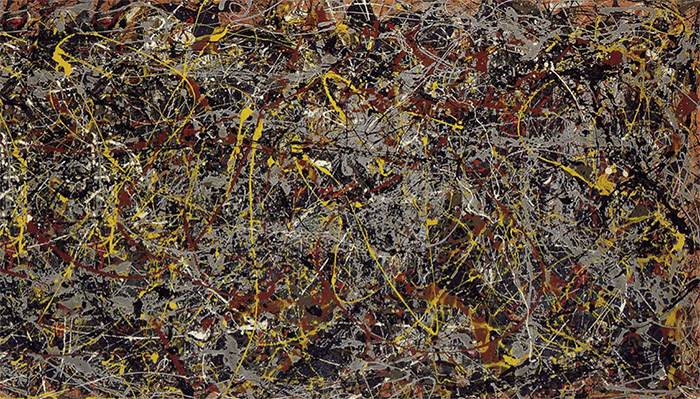
Number 5 by Jackson Pollock (1948)
Jackson Pollock laid his work out on the floor, walked around it, and dropped color with paint brushes and rods. In the year before the release of No. Pollock was a pioneer in many ways. Since the beginning, artists have been planning or testing larger paintings.
Pollock was driven by his passion and instinct as he dripped and threw paint around the fiberboard base, as his inspiration demanded.
His spontaneous masterpieces lit up the world of art. He did not use brushes but instead splashed and dripped. He started experimenting with synthetic gloss enamel paints that replaced old-fashioned oil-based paints. He dismissed the brilliant idea as "a necessary development."
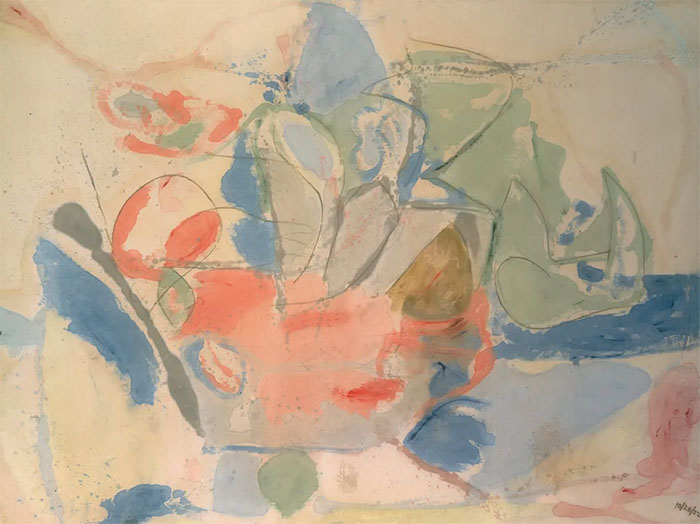
Helen Frankenthaler, Mountains and Sea (1952)
Helen Frankenthaler was an American abstract expressionism painter who created Mountains and Sea in 1952. Her first publicly displayed work was created at the age of 23. Critics initially criticized Mountains & Sea, but it went on to be her most well-known and important work. In the summer of 52, she visited Cape Breton Island and created vistas using portable easel apparatus.
The painting was described as a translucent, light-struck impression of mountains, boulders, and water. Its creator stated that many thought it looked like a large painting cloth.
Frankenthaler created Mountains and Sea by laying a panel unprimed directly on the floor and staining it with colors. She reduced oil paint with solvent and allowed the colors to flow. It was the first time she used this method.
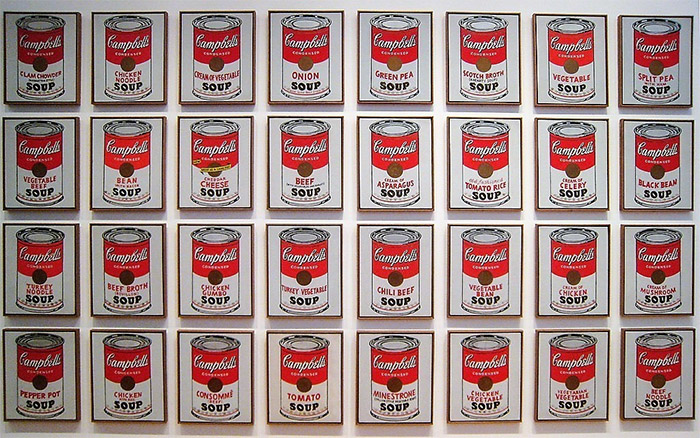
Campbell Soup Cans by Andy Warhol (1962)
Campbell's Soup Cans, one of America's most famous paintings, comprises 32 canvases. One canvas represents each of the 32 different types of soup produced at the time. This masterpiece helped Pop Art become a popular art movement in the United States.
The artwork's non-painter style and corporate subject sparked outrage because they challenged Abstract Expressionism's techniques and ideologies. Abstract Expressionism was America's dominant style at that time.
In the American art world, the subsequent discussions about the virtues and ethics of such a work, which lacked the aesthetics and metaphysics of Abstract Expressionist works, created a stir. Warhol's dry response to why he painted the soup cans was: "I had luncheon every day for 20 years, I believe, the same thing repeatedly."

WHAAM! by Roy Lichtenstein (1963)
Pop Art celebrates modern culture above elite culture. Pop Art is characterized by vibrant colors and recognizable iconography, including commercials, entertainers, and graphic novel characters. After Andy Warhol, Roy Lichtenstein was one of the most influential American artists in the style. His most famous work is Whaam. This is just one of many works by this artist that depict aerial warfare.
He served in the US Military from 1943 to 1946. Irv Nock, a comic book illustrator, was the inspiration for Whaam! The artwork was inspired by comic-book imagery and shows a jet fighter shooting a projectile at a second aircraft, causing the explosion. Whaam is well-known for combining vivid color and a compelling story. It "records while gently parodying America's traditional hero images."
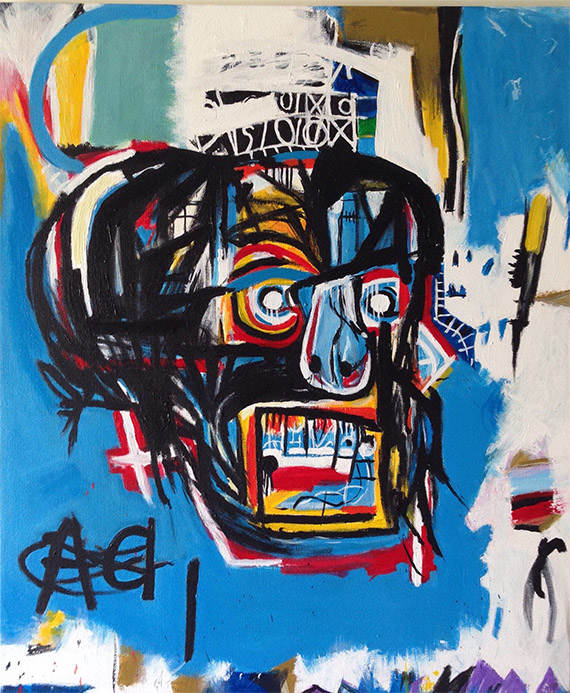
Jean-Michel Basquiat, Untitled (1982)
Untitled, a masterpiece of Jean-Michel Basquiat, is wild, unfiltered, and stunningly beautiful. The artist completed the work in January 1982. Its emotional impact is direct and immediate.
This painting's tremendous aesthetic energy announced to a society, which was then mostly obscure, the presence of a talented young painter. His works would forever alter the society.
Untitled is a powerful example of the unstoppable force of his artistic revolution.
It shook lower Manhattan with a roaring inferno in 1980, showcasing text, tone, and form, and sparked a dramatic revival of figurative painting. It was unveiled for the first time in 1982 but has not been seen again by the public since 1984, when it was sold to a collector.
This concludes our list of famous American paintings. These American paintings have inspired and, at times, shocked American and international artists for many years. These great American painters left behind a legacy of art that reflects their unique perspective on American life. This list includes some of the most beautiful American paintings created over the years.
FAQs
How Did Great American Painters Differentiate from Others?
America is a melting pot of cultures and influences. There is no other style like it on the planet. A variety of historical events and civil movements have created an artist who wishes to express their position in this diverse region.
When were Top American Artworks Created?
Since the beginning of American history, art has been a way to express oneself. Artists have risen to reflect today's culture, even in its turbulent past. This tradition has been around for centuries and will continue in some form into the future. Many Americans value their right to express themselves, and art is a powerful medium. The best American paintings, political, religious, or philosophical, have always captured the spirit of the time.
No Comments Yet...